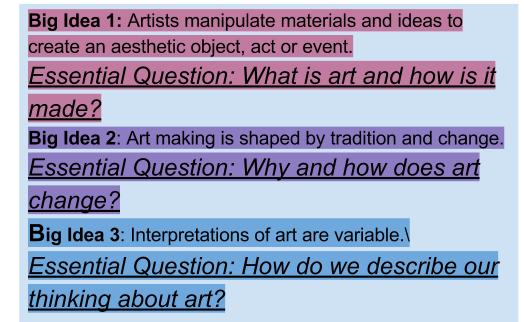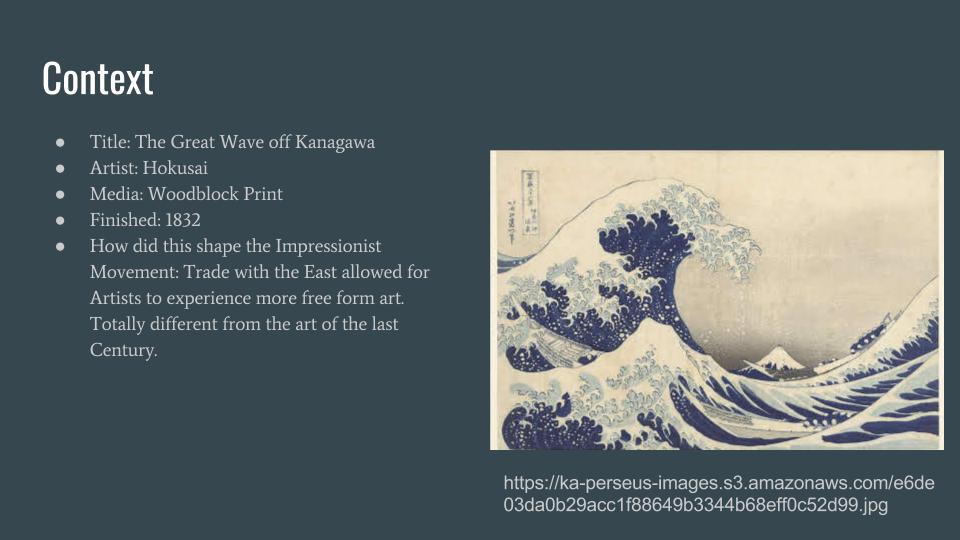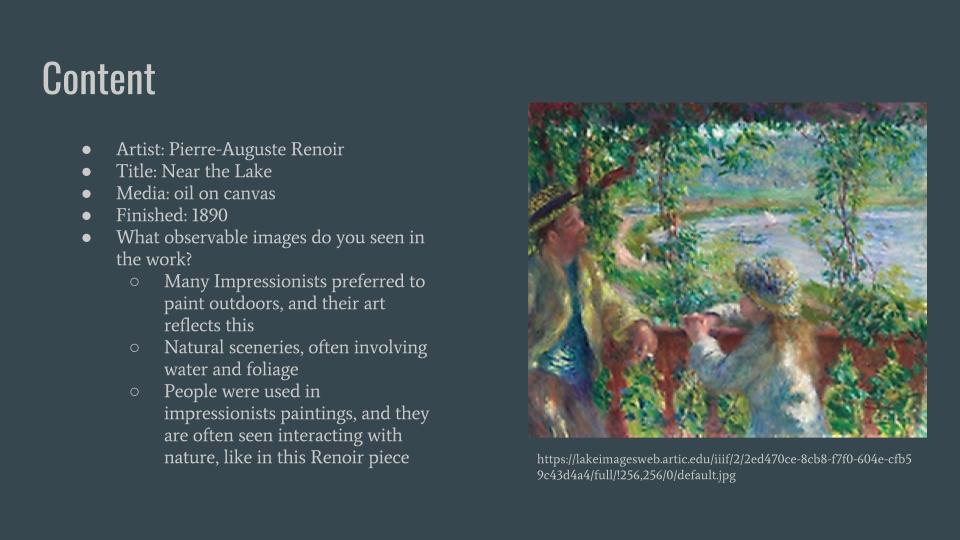|
I taught art history for the first time last winter. It's a subject matter I'm oh so passionate about but I found that teaching it sucked much of the joy away. Part of it was the hours and hours of preparation - I had no text book, like many teachers in my state that has cut the budget for materials again and again - so I was spending hours compiling my own materials and creating all my own assignment. This type of work was exhausting, but more that that, I realized that I didn't like what I was teaching. It was all about me. I was selecting the artists to focus on and doing all the heavy lifting of researching, summarizing and adding historical context so I could present what I deemed important to my lovely students, who took diligent notes. The focus of the class was on what I did and what I said. My students were, for the most part, in a passive role, taking notes. How could this create deep, lasting learning or foster a love of the subject? I realized that I needed to stop doing all the work. Instead, I started to plan how my class could look like this: I wanted the class to look like me briefly introducing the unit or topic, then students spending the majority of time working in groups to research, analyze and present content. This is giving up a lot of control, but with control comes ownership. I wanted this content to be ours, not just mine. However, I needed a way to give direction to students' research and consistently focus presentations on key concepts. I turned to the AP art curriculum framework and found exactly what I was looking for with these three essential questions. From these big ideas and the individual standards that follow, I identified six areas where my class could focus their learning: Content, Context, Form, Function, Tradition and Change. We spent the first few days of class learning about what these ways of viewing art mean, then I asked student groups to apply their knowledge by creating presentations about how these ideas were present in a range of Western art periods. This activity, I hoped, would give students a preview of content that we'd later learn in depth, but more importantly, give them an opportunity to apply what they'd learned about the six categories that make up the foundation of the class. So students watched videos from Khan Academy Art 1010 to provide an overview of their assigned period and used the Heilbrunn Timeline to research in more detail and find images to use. Here are some examples of slides one group created. As I listened to the presentations I noticed that the approach I used helped the groups take a complex subject and make sense of it. I liked how this structure allowed students to identify the information that was important to them instead of being limited to my interpretations and preferences. I also noticed that some students needed a bit more support to understand what I'm looking for in each category. To help make what I'm looking for clear, I'm planning to create a research and note taking document.
All in all, I'm excited about how this new class structure will impact student learning.
3 Comments
Nakia
2/4/2018 12:23:45 pm
This is great! I, too, spent hours assembling presentations that covered the span of art history and cultures, which I condensed into a semester course that sucked the joy out of it all. Do you have technology in your room?
Reply
MELISSA PURTEE
2/4/2018 03:09:12 pm
Yes! I have some laptops and most students have smartphones.
Reply
Marie Lipocky
2/5/2018 04:03:40 pm
Thank you so much for this! I was feeling the same way; I would rather my students take ownership of their learning than decide for them what is important. I would love to see more about how you implement this into your classroom, and the way you present this to students.
Reply
Your comment will be posted after it is approved.
Leave a Reply. |
Mrs. PurteeI'm interested in creating a student student centered space for my high school students through choice and abundant opportunity for self expression. I'm also a writer for SchoolArts co-author of The Open Art Room. Archives
December 2019
Categories
All
|




 RSS Feed
RSS Feed
